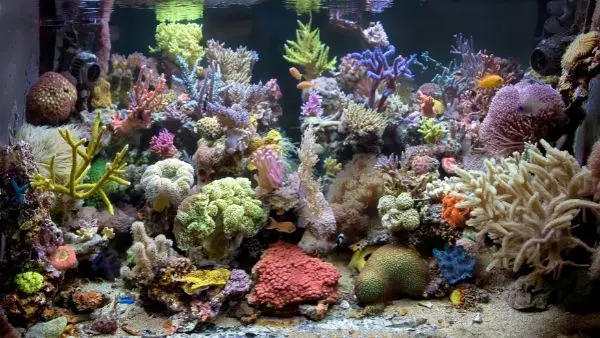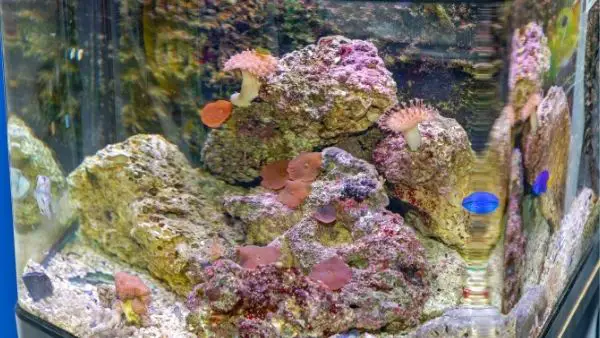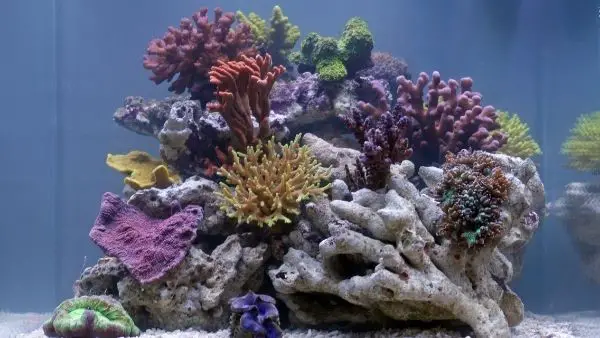A lot of conversations amongst fishkeeping enthusiasts arise regarding live rock. Common questions are constantly posed such as "what is coralline algae?", "How much do I need?", and "What are common aquascaping practices?".

Firstly, it is key that you know all the information regarding live rock and the process of looking after it, making sure it survives and thrives within your tank.
Live rock will almost certainly act as the foundation of your filtration system, with the rocks simply being dead coral that hosts macro and microorganisms which break down biological waste within your tank.
Live Rock and Dead Rock Information
This term is commonly used amongst experts and is meant as both literal and figurative terms. It quite literally is the base that live corals will host on as well as the base for filtration, which is the figurative version.
Live Rock Requirements and Tips
- Live rock will typically have a purple coloration, which is seen on the vast majority. This purple coloring is actually coralline algae.
- Coralline algae are awesome in color and are also very beneficial, reducing nutrients that pest algae utilize to would grow and thrive.
- Purchasing live rock is recommended to begin your aquarium's nitrification system. You can also grow your own by allowing microorganisms to develop and grow naturally on the dead rock.
- Ocean live rock will instantly provide your tank with beneficial organisms quicker than shop purchased.
- Live rock will typically introduce both wanted and unwanted hitchhikers to your tank, such as aphasia anemones, bristle worms, fireworms, nudibranch, and other, less harmful critters.
- Aqua-cultured live rock is a go-to for many fishkeeping enthusiasts when it comes to live rock as it has been developed in a controlled environment and tends to be free of pests while containing the beneficial bacteria needed for your tank.
Dead Rock Requirements and Tips
- Dead rock is essentially just rock that used to be live but has dried out and cleaned, containing no more beneficial organisms.
- If you decide to start your tank up with dead rock it can certainly help with minimizing unwanted critters entering your aquarium.
- Dead rock can actually become live rock again through completing a nitrogen cycle which will re-develop beneficial microorganisms.
Dead rock is also available in abundance, with several types being available on the market today, such as Fiji and Pukani. Both of these types of dead rock are called "eal dead coral rock", there is another named "reef saver", which is artificial and has been manmade.

The reef saver is considered dense, while the Pukani is known to be more absorbent. Remember, the more absorbent the rock is, the more beneficial organisms it can host.
How Much Do You Need?
When it comes to the numbers, there is no specific rule here as to how many you should have in your tank. Different types of live rock will come in different weights and sizes, this is due to rock density.
A more absorbent, less dense rock will be able to house more awesome-looking bacteria than a more dense rock. There is, however, no need to overdo it with the amount you have in your tank.
Pukani rock is good for water flow, meaning that it is good at sustaining the beneficial bacteria your aquarium will need. On the other hand, Fiji rocks are light and very absorbent - both of these types will be useful additions.
If you want an aquascape design that would require less rock than your aquarium needs, you should look into adding live rock. Also, consider products such as Marine Pure blocks, plates, or balls. These will certainly help with water flow and are perfect for when you are replacing reef rock.
Live Rock Tank Placement
When it comes to the placement of live rock within your tank and subsequent aquarium community, you will want to add it to your tank before any sand or another substrate has been. This ensures that the rock has a solid footing on the level base of your aquarium and doesn't shift.
Some people choose to add egg crates and other materials to the bottom of their tanks to protect the glass. This is a consideration and not essential, however, it is better to be safe than sorry!
When you are aquascaping you will need to ensure that the rock you are stacking is secure. By using aquarium epoxy to glue them into place is recommended, and you might want to create your own armature, by using acrylic rods and other materials.
Coralline Algae
As mentioned previously, Coralline Algae is a hard alga, bright purple in color, and primarily grows on live rock. There are certain types of dead rock that are available for sale colored to make it look like they are covered in Coralline, which is great for the aesthetics of your aquarium.
It is fairly easy to locate this purple algae-covered dead rock in most stores across the country. "Reef Rock" is one of the more popular versions of this and is a good choice if you are looking for a colorful dead rock.

Another proven method is to seed your tank with the coralline algae, using a booster to encourage and accelerate growth. A good algae growth accelerator is "CaribSea Purple Up".
To correctly seed your tank with this algae you can get scrapings from another tank and add them to your aquarium.
This alga is pretty commonly found within aquariums, so seeding may not be completely necessary, especially if you have an established tank already.
ARC Reef also has many dead rock kits that will come with wet rock, containing coralline algae, which will help with the process too. You may want to consider buying one of their kits.
Conclusion
So, when you are dealing with dead rock, cycling your tank is the most efficient and effective way of ensuring good bacteria develops and you are left with awesome colors, however, patience is certainly needed.
This method will almost always guarantee the introduction of hitchhikers - check out our hitchhikers guide on how to identify good and bad critters, and how to remove them humanely.
When it comes to purchasing live rock, perhaps the best option at the beginning would be Pukani. You can do all of the aquascaping you need, easily and efficiently, without having to worry about hitchhikers as much. The more live rock in your tank, the better off you will be for it.
Coralline algae are essential to acquire, and it is easy to get this from a fellow hobbyist friend or even from your local fish store. They will typically scrape it off the pre-existing live rock and sell it to you pretty cheaply. Also, getting some coralline booster will help speed the process up.
Your aquarium is constantly improving and developing, adding more amazing colors and tank ornaments is a must, however, adding in the correct things and doing it correctly is the most important thing to consider!
Aquascaping FAQs (Frequently Asked Questions)
Here are the answers to some of the most commonly asked questions posed by hobbyists regarding aquascaping.
Can I put dead live rock in my tank?
Yes, you certainly can, although it might be a good idea to purchase some live rock to acompany the dead live rock in your tank.
Can you aquascape live rock?
Absolutely, you can aquascape live rock, and you should do if you want to have a beautiful and brightly displayed saltwater aquarium. It is also recommended to add some dry rock too, to complete the aquascape.
Is live or dry rock better?
It is totally up to the hobbyists preferences here, although, our favorite is certainly live rock. This is because live rock already has plenty of life growing on it, which displays more coloration and patterns.

